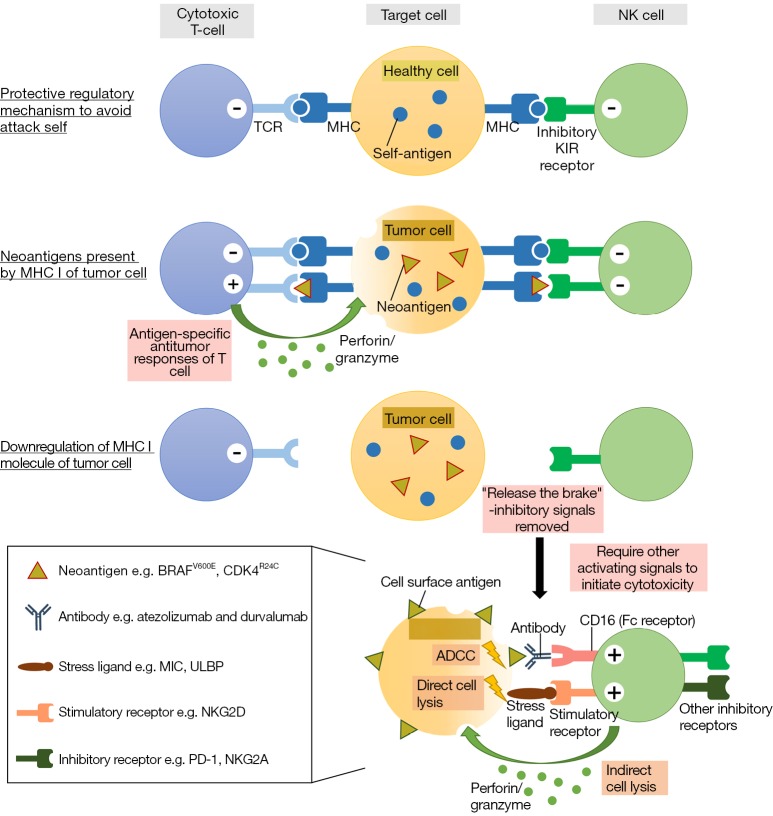Figure 2.
Tumor cell recognition by T cell and NK cell. The left panel shows the activated cytotoxic T cell expresses specific T-cell receptors (TCR) on its surface which recognizes tumor-specific antigens/neoantigens presented by major histocompatibility molecules (MHCs) while self-antigens are tolerated. Usually after a priming phase takes place, a T cell-mediated antitumor activity can be initiated when an antigen-specific recognition and other co-stimulatory signals (not shown) are presented. The right panel demonstrates that the inhibitory killer-cell immunoglobulin-like receptors (KIRs) of NK cells are controlled under an antigen non-specific and MHC non-restricted manner, wherein downregulation of MHC molecule can abate the immunosuppression signals mediated by the inhibitory receptors. Concurrently, upon activating receptors engagement of stress ligands on tumor cells, NK cell can exert cytotoxicity to the tumor cell by different mechanisms. In addition, monoclonal antibody that recognizes specific tumor antigens on the surface of the tumor cells can be bind by the CD16 receptor present on NK cells through its Fc region. Degranulation can therefore be triggered to induce apoptosis of tumor cells, which is known as antibody-dependent cell-mediated cytotoxicity (ADCC).

